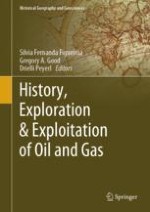This edited volume discusses scientific and technological aspects of the history of the oil and gas industry in national and international contexts.
The search for oil for industrial uses began in the nineteenth century, the first drills made in Azerbaijan and the United States. This intense search for a substance to become one of the most important energy sources was, many times, based on skill as well as luck, resulting in knowledge and the development of prospecting and exploration technologies.
The demand for oil improved expertise in geological science, in areas such as micropaleontology, stratigraphy or sedimentology and informed different disciplines such as geophysics. These contributions made possible not only the discovery of new oil fields but also new applications and methods of exploration. Beyond the scientific and technological aspects, an industry that grew to such considerable size also impacted the political, economic, social, cultural, environmental and diplomatic issues in history. The book approaches these changes in different scales, countries, areas, and perspectives.
This edited book appeals to researchers, student, practitioners in various fields from geology and geophysics to history. It is also an important resource for professionals in the oil and gas industry.
